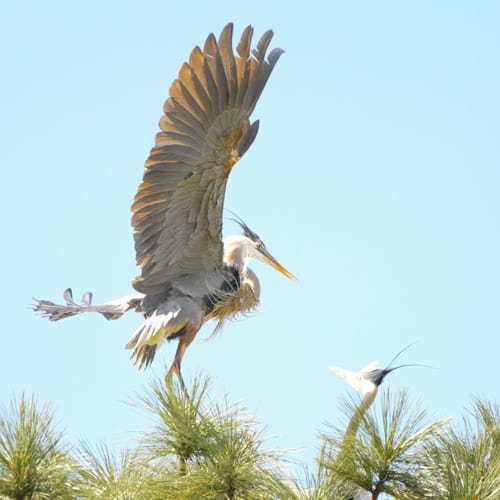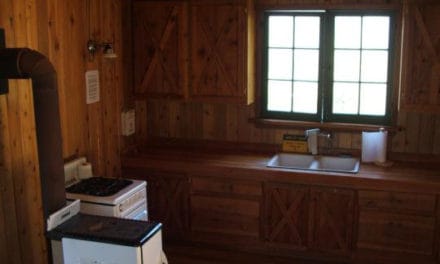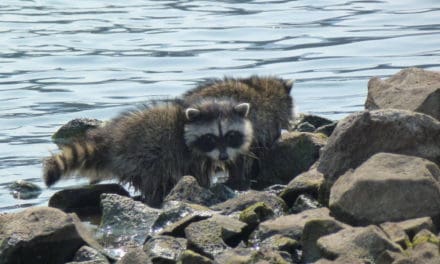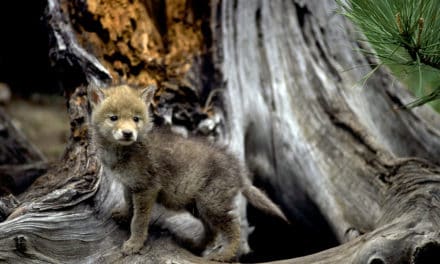At the top of two very tall pine trees which overlook a beautiful lake, the Great Blue Herons build their nests, court, lay their eggs and raise their young!
I have had the pleasure of visiting this rookery for 4 years now, and I truly marvel that such a large, seemingly awkward, bird choses to build their nest so high in a tree to raise their young. As the trees are very dense, it is hard to count, but I believe there are approximately 50 nests in this colony!
While I was there in April, most of the chicks were hatched, and as I sat for hours observing I watched the nest be bombarded by a Bald Eagle, and the Red Tailed Hawks swooped in from time to time, and unfortunately the Turkey Vultures sitting at the base of the tree. The sounds that the young make sounds like a den of “mad baby bobcats”!!! I also observed the comings and goings of the adults to bring food back to their young.
In very early spring, March and April, the Herons return to the rookery. It is first come first serve in the rookery. While they return to the same rookery, the male picks a nest, then he begins to court and try to attract a female, they are only monogamous during a single breeding season.
These nests can grow to a size of about 50” wide by 35” deep and are made of sticks.

The female will lay up to 6 pale blue eggs, and they raise one brood per year. The male will incubate for about 10 hours per day, and the female will incubate for the remainder, including the night. The chicks will hatch in approximately 27 days.
Both of the parents will feed the chicks by regurgitating food for them. Depending on location, the young will take their first flight anywhere between 55 to 80 days.
The chicks will continue to return to the nest for about 3 weeks, then they will begin to forage for themselves. They will all disperse for the winter, and then return to the rookery in the spring to start all over again!













